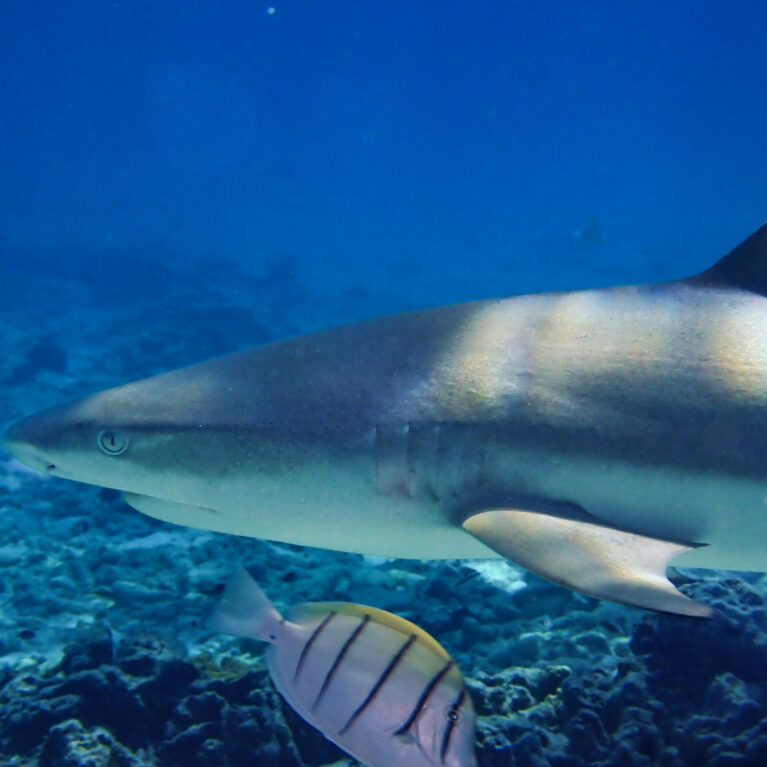Listening to the Sharks
Across D’Arros Island, St Joseph Atoll and the broader region we have an array of stationary acoustic receivers that are constantly recording information about the presence of individual animals that we have tagged with acoustic transmitters. When a tagged animal moves within its range, the receiver records the ID tag (and thus the animal), date and time. Together as a network, these receivers tell us about the movements and distributions of different animals across different spatial scales. We have a total of 77 receiver stations, and we have tagged many individuals of different species of shark, ray, fish and turtle, so a lot of data is constantly being recorded on these receivers. Our staff download the data from and maintain these receivers every six months.
Since its inception in 2012, the SOSF-DRC has been managed and run by different people in various capacities. Lab managers, research officers and research assistants have been integral to the daily operations of the centre over these years and our long-term projects have been handed on from past to present management.
Currently the SOSF-DRC is run by Dr Robert Bullock and Henriette Grimmel in a joint-management capacity.
The following is a history of past management staff:
- Dr Rainer von Brandis (scientific director) 2006/2012–2016, previously did his PhD on D’Arros and managed the research lab for the previous owners of the island
- Chris Boyes...
Acoustic telemetry
The key objective of this project is to monitor the patterns of habitat use and behaviour across a variety of species that use the D’Arros and St Joseph site.
Understanding the movements of different species in space and time gives us insight into the role of these species within ecosystems, as well as the requirements they have from those ecosystems. Movement data gathered for threatened species are particularly important for informing the protection of those species.
Acoustic telemetry is the process of using sound and distance to determine the movements of animals. Two pieces of equipment are involved: a transmitter and a receiver. Each transmitter emits a series of sound pulses that is detected by a stationary receiver. The receiver records the unique pulse series of a transmitter and logs the transmitter date and time of the detection.
By working with a network of receivers, it is possible to track movements between them. This tells us about the amount of time an animal spends in any one area, the different kinds of habitats it prefers and how large an area it may occupy.
When used over the long term, acoustic telemetry accumulates a wealth of extremely valuable data that have real value for conservation, providing as they do important information about how movements of threatened species overlap with fishing areas for example, or helping to design effective marine protected areas that take the movements of key species into consideration. The long-term collection of data also tells us about changes in the use of space over the lifespan of different animals and how these affect their management and conservation.
The key objective of this project is met by several specific study objectives:
- To acoustically tag individual animals from a range of conservation-relevant species;
- To collect data on the distribution, movements and behaviour of tagged species;
- To generate analyses from receiver data that provide insights into the natural ecology of tagged species;
- To utilise these data to inform the management and conservation of tagged species, where necessary.

